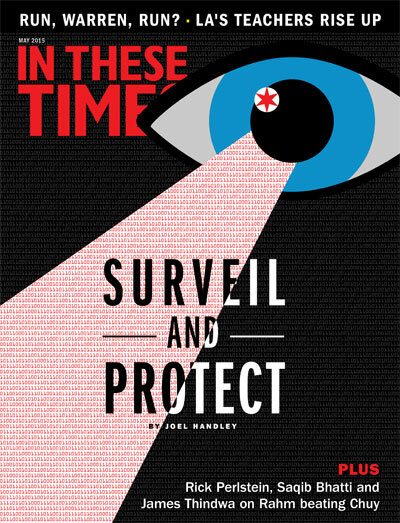
Like clockwork, every four years some progressives begin having third party dreams. And every four years, an In These Times editorial addresses such quixotic pursuits.
This May, various Green and Socialist parties, along with publications like Jacobin and organizations like the Democratic Socialists of America, will gather in Chicago, heeding a call to build a “left political alliance in opposition to the two-party system of corporate-capitalist rule.”
Yes, corporate capitalism – a system in which multinationals, captained by plutocrats and endowed with the rights of flesh-and-blood people, rule a global kingdom – is the bane of humanity. In 1976, In These Times was founded (in part) to present democratic alternatives to such a regime.
And yes, we in the United States – unlike citizens of countries with proportional representation – are subject to a two-party system. We elect candidates for national office in first-past-the-post elections in which the candidate with a plurality of votes usually wins. This system ensures the dominance of two parties, because even the most respectable showing for a third party generally translates into zero legislative seats – the most demoralizing possible outcome.
This unfortunate arrangement is embedded in the political structure of this country. Wishful thinking cannot make it otherwise.
Without being categorically opposed to any third party activism, past experience should leave us deeply skeptical of such efforts. Yes, local success stories are inspiring, such as the election in 2013 of Kshama Sawant, a member of the Socialist Alternative party, to an at-large Seattle city council seat. Yet while many have tried, no national third-party effort has broken the dominance of our two-party system since 1854. That year the Republican Party was born – out of the dissolution of the Whig Party over the issue of slavery.
As happened in 1854, a realignment of America’s two-party electoral system occurs when a new second party emerges from the ashes of the old. These days, that is most likely to occur with the fracture of the Democratic Party – a party that is currently experiencing an internal crisis.“There is a battle for the heart and soul of the Democratic Party,” is how Stephanie Taylor, co-founder of the Progressive Change Campaign Committee, described it in an interview.
On one side are the neoliberal Democrats, like Hillary Clinton, who doesn’t bat an eye raking in hundreds of thousands of dollars speaking at Goldman Sachs soirées. On the other side are those in the democratic wing of the Democratic Party, like Sen. Elizabeth Warren, who say things like,“To anyone who is listening at Citi[group]: I agree with you. Dodd-Frank isn’t perfect. It should have broken you into pieces.”
Warren’s political discourse is more alarming to Wall Street titans than the slogans of any third party campaigner. Electoral politics is not a space in which we beautiful souls should vote our consciences – it is a cynical game played on a tilted table. The question is not, as the purist Left seems to insist, whether these politicians are sufficiently progressive – they will surely fall short at times. The critical question is: Are elected officials like Warren mobilizing real-world constituencies around the fault lines in American politics and in the Democratic Party?
The answer: Yes, they are.
Joel Bleifuss, a former director of the Peace Studies Program at the University of Missouri-Columbia, is the editor & publisher of In These Times, where he has worked since October 1986.









